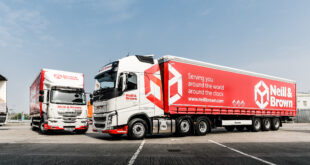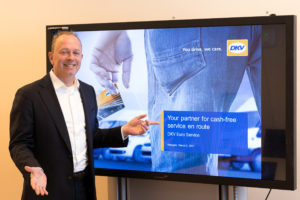Toll-charging is not a new thing. Ancient Germanic tribes were known to charge some sort of financial compensation on travellers crossing mountain passes. Whereas the manner in which a country financed its roads used to provide the basis for whether or not to levy tolls, in the past few years we have been watching a growing number of EU-countries deciding to levy tolls specifically on freight transport. Until the nineteen-nineties these tolls were paid by obtaining vignettes or in cash at toll gates. From the early nineteen-nineties onwards, these ways of payment quickly came to be replaced by electronic toll billing systems.
A characteristic of this process is that each individual EU member-state chose its own electronic toll system, resulting in none of these systems being compatible with others. The two most important systems are DSRC-based (Dedicated Short Range Communications), operating on the basis of RFID-technology, and the GNSS-system (Global Navigation Satellite System), which employs GPS-technology. The preferred toll charging system for special congestion charges and specific toll stretches like the Dutch Blankenburgtunnel is based on vehicle licence identification. Last not least there are some countries that employ electronic vignettes, in which case the vehicle licence and the term of validity are fed into a database.
The unchecked growth in on-board units used in trucks, plus the fact that in many cases electronic toll payment is mandatory rather than optional, have given birth to a situation that is getting more and more unworkable with each introduction of yet another new electronic toll charging system. Each box requires its own installation and a new account being opened, while it is obviously expected to function spotlessly. All these requirements result in inefficiency, additional costs and frustration, which we witnessed recently at the introduction of the Belgian toll system in 2016.
At DKV Euro Service, this ever-increasing growth in the use of electronic systems, each involving its own on-board unit, has been a point for attention for many years. Gertjan Breij, Managing Director for the Benelux countries: “If we wish for our customers to take to the road without a problem, the system must become easier and less complicated. We have been trying to realise this over the past years by integrating as many electronic toll charging systems as possible in one properly functioning OBU, the DKV BOX SELECT. On the other hand, DKV has been contributing widely to the discussions taking place around EETS (European Electronic Toll Services).” EETS is a directive issued by the European Parliament in 2009, aiming to realise interoperability in electronic toll payment as per October 2012. However, deadlines repeatedly were not met as they foundered on the strict EU-directives and preconditions that appeared to clash in many places.
All the same, in the past years a situation has been drawing closer that is characterised by shared technical solutions and pilots that have been performed with a view to making one uniform toll box a possibility. This means that a toll box fit for use all over Europe (EETS box) is getting closer and closer. DKV Euro Service will for instance launch its DKV BOX EUROPE in 2018. Equipped with hybrid wireless technology, this box will be able to register and settle both DSRC (Dedicated Short Range Communications) and GNSS (Global Navigation Satellite System) tolls systems. Initially it is intended for use in the Belgian, German, Austrian, Polish and French tolls systems, to be followed simultaneously or shortly afterwards by the systems used in Italy, Portugal, Spain and Hungary. In the medium term the DKV BOX EUROPE is intended to enable users to pay all European tolls levied on the use of roads, tunnels and bridges. “This DKV BOX EUROPE is compliant with the latest demands set by all EU member-states and it is therefore fit for use all over Europe in time to come. Contrary to many other boxes available in the market right now, it also complies with all technical specifications for pan-European toll payment. The DKV BOX EUROPE is our way of cancelling the need for yet another future box exchange,” says Gertjan Breij, Managing Director DKV Euro Service Benelux. “What’s more, the DKV BOX EUROPE already contains all added value to be able to cope with future tasks like detailed analysis of vehicle data.”
 DKV BeNeLux You drive, we care
DKV BeNeLux You drive, we care


